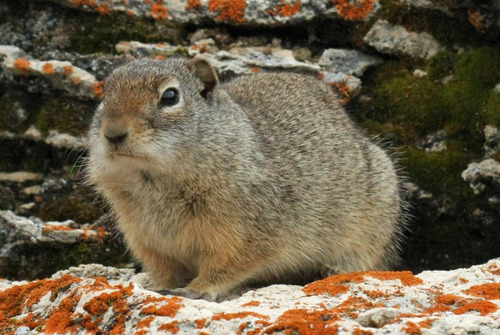
Uinta Ground Squirrel
The Uintah ground squirrel, Urocitellus armatus, thrives in the Rocky Mountains' alpine meadows. Notable for its extended hibernation, this burrowing herbivore enhances soil health and seed distribution. Its alert demeanor and ecosystem contributions make it a fascinating subject of study in alpine biodiversity.
209.35278 - 425.24285000000003 g
Weight
Length: 28 - 30 cm
Size
Brown, Grey
Color
1 year
Age of Sexual Maturity
22 days
Age of Weaning
32 mph
Top Speed
Least Concern
Conservation Status
Unknown
Population Trend
Characteristics
Urocitellus armatus, commonly known as the Uintah ground squirrel, inhabits alpine meadows and sagebrush flats of the Rocky Mountains. It is known for its burrowing behavior and hibernates for about eight months. The squirrel has a keen sense of alertness and plays a crucial role in soil aeration and seed dispersal.
Distribution Range of the Uinta Ground Squirrel
Urocitellus armatus, commonly known as the Uinta ground squirrel, is native to the western United States. Its geographical distribution includes parts of Wyoming, Utah, Idaho, and Colorado. This species is primarily found in the Uinta Mountains and adjacent areas, including the Wasatch Range and other high-altitude regions in the Rocky Mountains.
Uinta Ground Squirrel's Habitat
Environmental Conditions
The Uinta ground squirrel inhabits high-altitude environments, typically between 1,800 and 3,500 meters (6,000 to 11,500 feet) above sea level. It prefers open grasslands, meadows, and shrublands within montane and subalpine ecosystems. These areas are characterized by cold winters, with significant snowfall, and moderate to warm summers. The vegetation in these habitats includes grasses, forbs, and low shrubs, providing both food and cover.
Ecological Niche
Urocitellus armatus occupies an ecological niche as a herbivorous rodent, primarily feeding on grasses, seeds, and other vegetation. It plays a crucial role in its ecosystem by influencing plant community dynamics through its foraging activities and by serving as prey for a variety of predators, including birds of prey, foxes, and coyotes. The species is also known for its burrowing behavior, which helps aerate the soil and create habitats for other organisms.
Copyright @ Nature Style Limited. All Rights Reserved.
 English
English